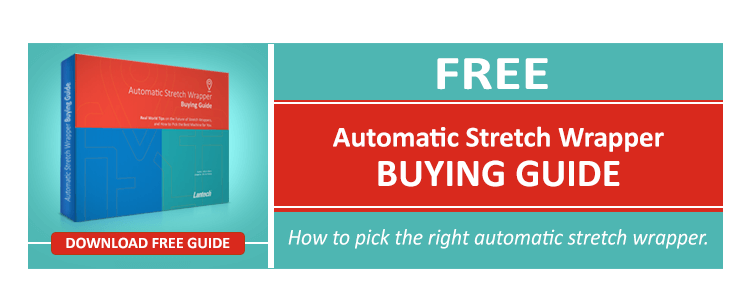The stretch wrapping industry is like any other industry when it comes to its jargon, it can be difficult to intuitively understand the terminology that is essential to the industry. Stretch wrapping can also complicate the matter by co-opting a few keywords and phrases that are easy to understand but using them in a way that is specific to the industry.
The good news is that unlike legal jargon or technical terms, the terminology around stretch wrapping is fairly straight forward. Most stretch wrapping practices and terminology hinges on understanding a few key phrases starting with…
What does “As Made” condition mean?
 The phrase “as made” gets thrown around a lot in the world of stretch wrapping. It can be tempting to think of this phrase as another way of saying “perfect” or “without flaws”, but that is incorrect. Sometimes products are damaged during production, during packaging, or during the pallet assembling process. When that happens, there is no amount of stretch wrapping expertise that can fix the damage.
The phrase “as made” gets thrown around a lot in the world of stretch wrapping. It can be tempting to think of this phrase as another way of saying “perfect” or “without flaws”, but that is incorrect. Sometimes products are damaged during production, during packaging, or during the pallet assembling process. When that happens, there is no amount of stretch wrapping expertise that can fix the damage.
So when we say “as made” we mean the condition the load is in when it arrives at the stretch wrapper. Stretch wrapping can only work to preserve the condition of the products as they were when they arrived at the stretch wrapper.
Understanding Damage
Damage, then, is any change in the “as made” condition that reduces customer satisfaction. There are a lot of ways that a product can suffer damage between the manufacturing floor and its final destination. In the world of stretch wrapping, however, we concern ourselves with the types of damage that happen in transit.
After all, stretch wrapping can’t stop a can from being dented once it has been unloaded from the pallet. Stretch wrapping just gives it the best possible chance of reaching its destination in “as made” condition.
Effectively Shipped
When we talk about effectively shipped, we are referring to the load or product arriving in “as made” condition at the lowest cost. Effective stretch wrapping reduces the chances of damage, increases the probability of a product arriving in “as made” condition, and does it in a cost-effective manner.
Containment Force
Containment force is one of the most important stretch wrap terms to understand because it can mean the difference between an effectively wrapped pallet load and damaged goods.
Containment Force is the hugging pressure that holds your load together. Containment Force is the result of the number of revolutions of the stretch film multiplied by the wrap force (tightness). It’s the key specification in reducing damage and ensuring safe to ship loads.
Automatic vs semi-automatic
The distinction between an automatic and a semi-automatic stretch wrapper is vital for finding the right stretch wrapping solution. So much so, in fact, that we’ve got a whole article breaking down the various type so stretch wrappers. Click here for a discussion of the varying degrees of stretch wrapping automation.
Check out these related posts on stretch wrapping:
- 3 Keys to Stretch Wrapping Success
- Stretch Wrapper Buyers Beware! Don’t Overlook These 5 Cost Drivers
- Does Simple Automation Make Sense in Your Stretch Wrapping Process?
This post was published on October 25, 2016 and updated on April 13, 2017.
October 25, 2016

